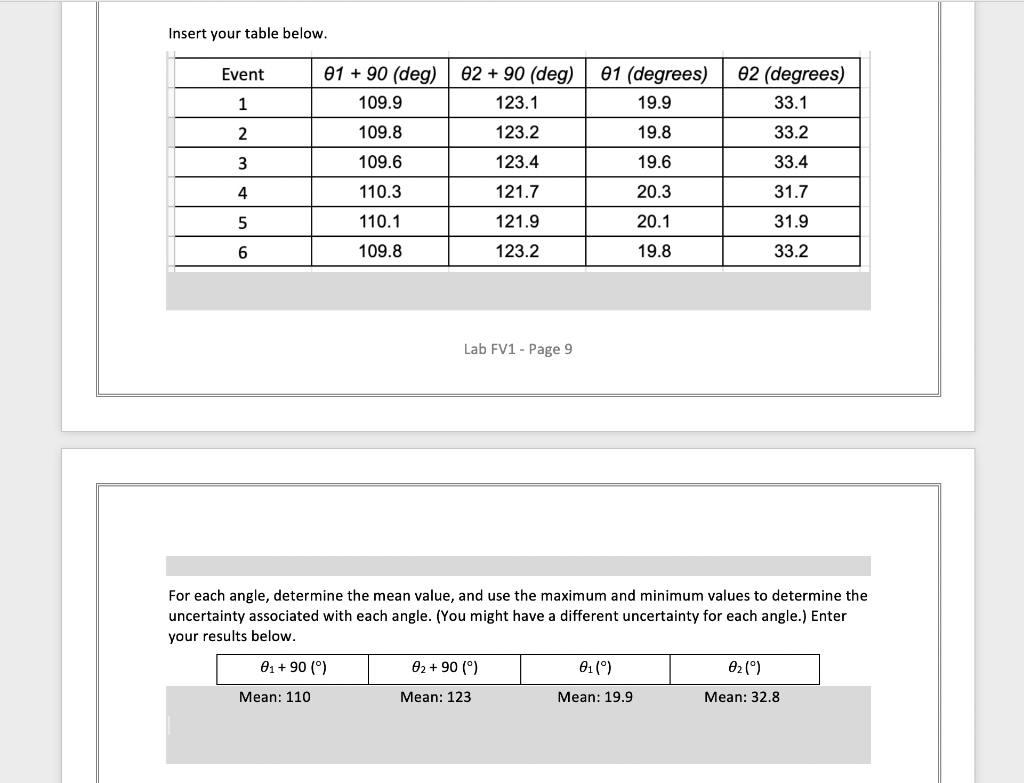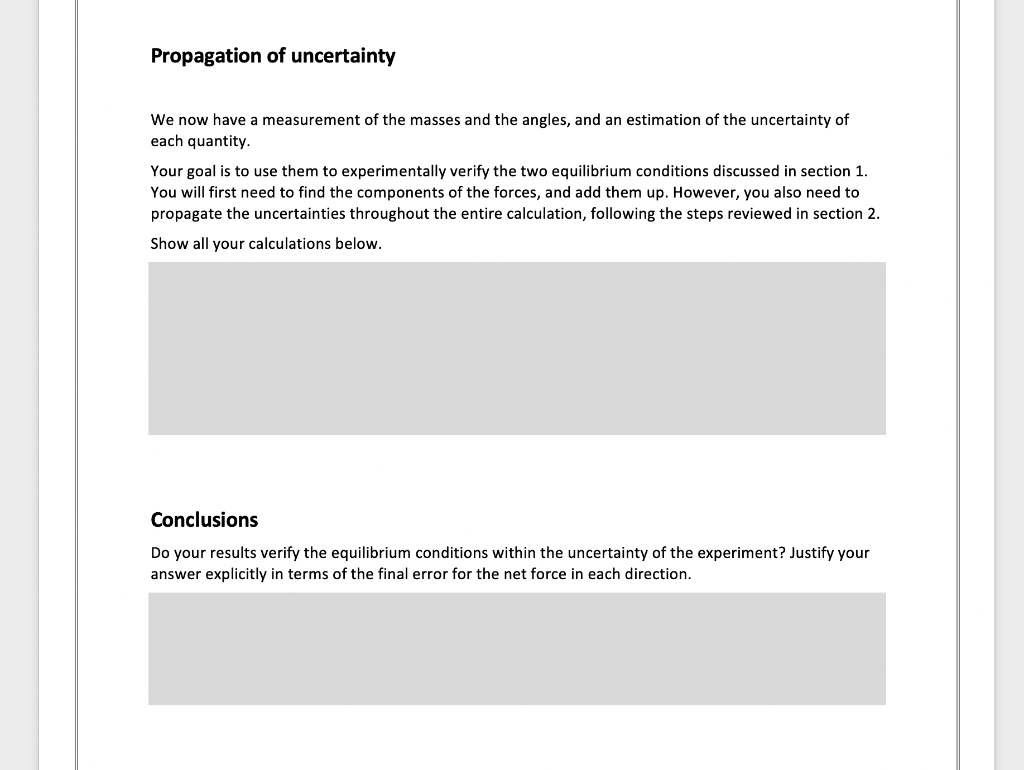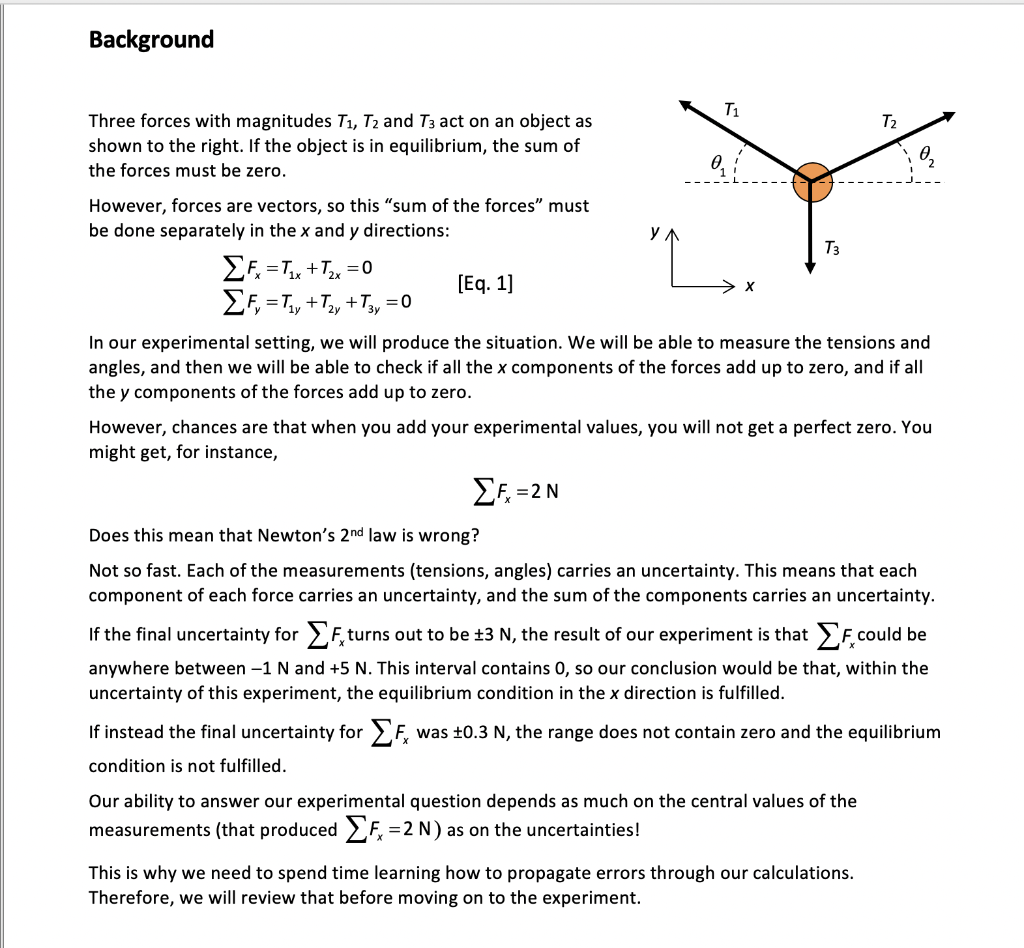Need help calculating the uncertainties of these values. Posted both the means as well as the max and min values. They need to be calculated using the max and min. Please show how you solved!

Also need help verifying the equilibrium conditions. Need to find the components of the forces and propagate the uncertainties throughout the entire calculation. Background is posted below,.


Insert your table below. Event 01 + 90 (deg) 109.9 02 + 90 (deg) 123.1 01 (degrees) 19.9 02 (degrees) 33.1 1 2 109.8 123.2 33.2 19.8 19.6 3 109.6 123.4 33.4 4 110.3 121.7 20.3 31.7 5 110.1 20.1 31.9 121.9 123.2 6 109.8 19.8 33.2 Lab FV1 - Page 9 For each angle, determine the mean value, and use the maximum and minimum values to determine the uncertainty associated with each angle. (You might have a different uncertainty for each angle.) Enter your results below. 01 +90 (0) 02 +90 () 01) 82() Mean: 110 Mean: 123 Mean: 19.9 Mean: 32.8 Propagation of uncertainty We now have a measurement of the masses and the angles, and an estimation of the uncertainty of each quantity. Your goal is to use them to experimentally verify the two equilibrium conditions discussed in section 1. You will first need to find the components of the forces, and add them up. However, you also need to propagate the uncertainties throughout the entire calculation, following the steps reviewed in section 2. Show all your calculations below. Conclusions Do your results verify the equilibrium conditions within the uncertainty of the experiment? Justify your answer explicitly in terms of the final error for the net force in each direction. Background T1 Three forces with magnitudes T1, T2 and T3 act on an object as Tz shown to the right. If the object is in equilibrium, the sum of the forces must be zero. o However, forces are vectors, so this "sum of the forces" must be done separately in the x and y directions: T3 F = Tax +Tex=0 [Eq. 1] EF, =Ty + y + x =0 In our experimental setting, we will produce the situation. We will be able to measure the tensions and angles, and then we will be able to check if all the x components of the forces add up to zero, and if all the y components of the forces add up to zero. However, chances are that when you add your experimental values, you will not get a perfect zero. You might get, for instance, , =2N Does this mean that Newton's 2nd law is wrong? Not so fast. Each of the measurements (tensions, angles) carries an uncertainty. This means that each component of each force carries an uncertainty, and the sum of the components carries an uncertainty. If the final uncertainty for F turns out to be 13 N, the result of our experiment is that could be anywhere between -1 N and +5 N. This interval contains 0, so our conclusion would be that, within the uncertainty of this experiment, the equilibrium condition in the x direction is fulfilled. If instead the final uncertainty for F, was 10.3 N, the range does not contain zero and the equilibrium condition is not fulfilled. Our ability to answer our experimental question depends as much on the central values of the measurements (that produced XF =2 N) as on the uncertainties! This is why we need to spend time learning how to propagate errors through our calculations. Therefore, we will review that before moving on to the experiment









